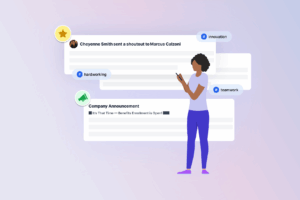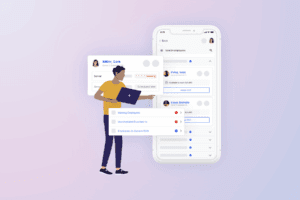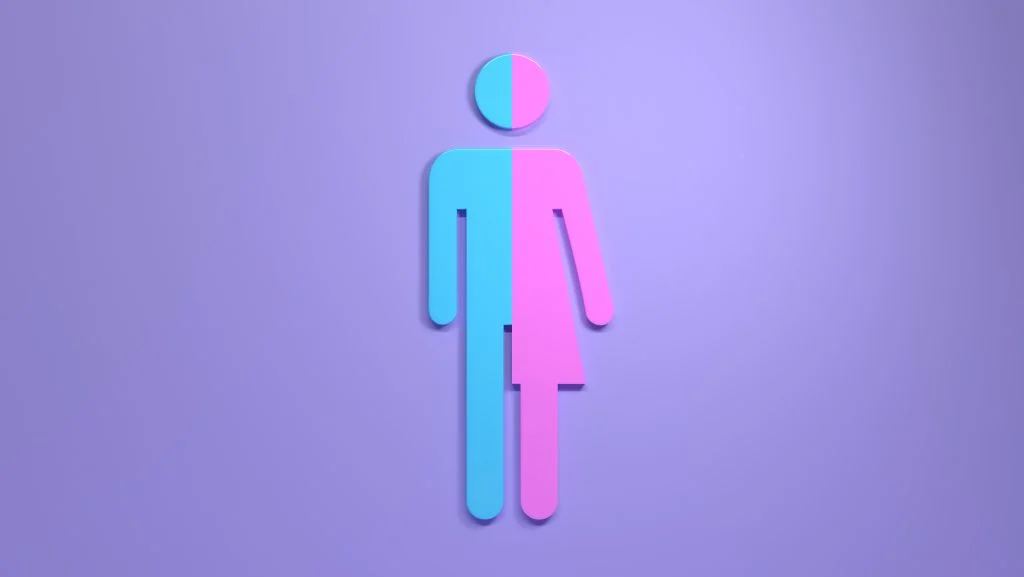Share
Political debates about gender, sexual identity, and orientation have made common sense accommodations unnecessarily polarizing in the workplace. Every business should strive to ensure everyone feels welcome and valued as an equal part of the team.
Not only is discrimination illegal, it can also drive away some of your most motivated employees. This includes customers as well. Rather than waiting for gender inclusivity conflicts to arise, it can be helpful to address company policies and training materials head-on.
What is gender inclusivity?
Both inclusion and diversity are incredibly beneficial for the company and your staff, but they are not the same thing. Let’s start with the difference between diversity and inclusivity.
Diversity looks at the ethnicities, genders, and other demographic information of your workforce, aiming for a mix of people who represent a wide range of groups.
Inclusion is the pro-active process of making sure that minority groups are empowered and heard.
Why does gender inclusivity matter?
Without deliberate inclusion, an emphasis on workplace diversity can feel like shallow tokenism. You don’t want minority employees (or anyone, for that matter) to feel like they’re being discriminated against, treated unfairly, or not given the same opportunities by your company.
Since misunderstandings happen, and employees bring a lot of different personal perspectives to their job, it’s important to have training and company policies that get everyone on the same page. Starting with management, make sure everyone understands the importance of gender-inclusive language and policies.
President Biden’s Executive Order 13988
In January 2021, the fourth Executive Order signed by Biden was “on Preventing and Combating Discrimination on the Basis of Gender Identity or Sexual Orientation.”
According to the ACLU, the order only affirmed decisions that had already been made by Congress and the Supreme Court.
Under existing anti-descrimination laws like Title VII and Title IX, trans women (and people with other gender identities and sexual orientations) have the same protections as cisgender women and other protected classes.
Back in June of 2020, the Supreme Court decision in Bostock v. Clayton County confirmed that the Civil Rights Act protected LGBT employees from discrimination.
Tips For Creating Gender Inclusivity at Work
Offer diversity, inclusion, and anti-discrimination training
Training sessions are the best ways to update managers and employees on expectations. Beyond ‘political correctness,’ explain to managers how inclusion benefits the whole company.
Set clear policies against harassment based on gender
Nobody supports harassment, but personal definitions vary widely. Publicly declare rules and consequences for responding to incidents. Make sure you’re protecting employees with different gender identities and gender expressions.
Remove gender requirements from the hiring process
When recruiting, you don’t need to know the gender of each applicant for a job opening. When comparing resumes, you might consider removing the applicants’ names, since some could suggest gender and ethnicity to the people reviewing candidates.
Review your employee benefits offering
Look through the employee benefits paperwork for discriminatory or exclusionary language, particularly in categorizing employees as either male or female. Counselling services are a helpful and gender neutral benefit to consider adding.
Update the employee handbook
Remove any unnecessary gender-based language, and include your policy on gender-based harassment. Update dress code to be more inclusive. Remove or standardize rules currently directed at one gender, like “women with long hair should…” Gender-specific dress codes are illegal in some states.
Ensure diversity throughout all levels of company
It’s not enough to have a diverse workforce in entry-level positions. Make sure you’re developing all employees by setting diversity goals for committees and management positions. Involve minority workers as stakeholders in projects, and you’ll avoid the blindspots that come with homogenous teams.
Share preferred pronouns
In order to create an inclusive and comfortable space, normalize sharing your preferred pronouns. If pronouns initially feel awkward as a part of verbal introductions, your preferred pronouns can be added to an email signature or name tag.
Consider gender neutral bathrooms
If your facility has single-person bathrooms, consider labelling them as gender neutral. For the toilet stalls in larger bathrooms, consider bigger doors, panels that reach to the floor, and secure locks for added privacy.
Celebrate differences
If you already have a diverse workplace, make sure that employees have equal freedom to express themselves. Find opportunities to be positive with choices like celebrating pride authentically in the workplace.
Create a safe and accepting workplace culture
Your workplace culture isn’t something you can simply fix and forget. Aim for continuous improvement by getting creative. Use your Learning Management System to promote gender inclusivity and diversity across the whole company.
For more information about how Netchex can help your company, contact us today!
Related articles

The Real ROI of Streamlining HR and Payroll

Tasks & Workflows: Innovating Automation for HR

How to Build a Scalable HR Stack for a 50–200 Person Team

